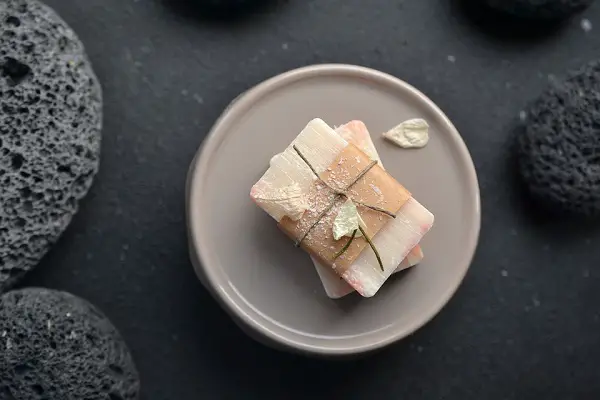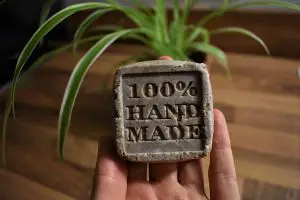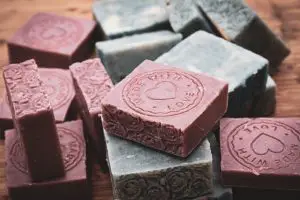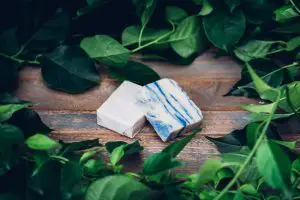You have decided to switch to solid shampoo but this little pebble is giving you a hard time? This is normal, like any new thing it takes some getting used to. You start a whole new hair routine, motivated by its practicality, its naturalness, and its ecological aspect. You have taken the step to test this still discreet product in the market. However, at first you may be disappointed with the promises sold. Indeed, many are those who have hair problems when switching to solid shampoo. Many also encounter problems in its use due to the unusual composition of the product. We have heard of your many concerns. Therefore, in this article, we are going to help you take this little stone in your hand.
First of all, we will see what are the hair problems with solid shampoo. We will see that there are many problems (sticky, sticky, oily, dry, dull, itchy hair, etc.). We will give you advice to avoid these inconveniences. Then, in a second step we will see the problems related to the use and composition of solid shampoo, and especially why solid shampoo becomes soft or crumbles.
In this section:
What are the hair problems with solid shampoo?

“Going natural doesn't work on my hair”. “My god, my hair looks like straw!” “My hair is much duller and drier than before” “My hair is sticky and sticky I don't understand”… Do these phrases sound familiar to you? This is normal, you are not alone with these hair problems. Lots of women have been there! Switching from liquid shampoo to solid shampoo is a radical change. Also, a radical change is very rarely done smoothly. This is the case with the hair.
We will first see together the different hair problems related to solid shampoo. Then we will give you tips for eradicating those hair problems related to solid shampoo.
Why am I having hair problems with my solid shampoo?
Different problems can appear when switching to solid shampoo. Many women complain in particular of having hair that looks sticky or sticky, others the hair fatter or on the contrary drier that before, for others the hair appears duller, less shiny and sometimes it even happens that they become impossible to disentangle. So why is it so difficult for some of us to change our shampoo? Why does solid shampoo cause hair problems?
You should know that there is no hair more or less suitable for receiving a natural treatment. Conventional liquid shampoos have just made us forget the true nature of our hair and it is sometimes difficult, by removing all the superfluous that all its chemical agents give us, to see that finally our hair is in a sorry state. Unfortunately, conventional shampoos have biased our perception of our true nature of hair.
When we stop using conventional products, the hair undergoes a detox and for a few months they will have problems. They will be duller, drier, or on the contrary more oily, less soft, more sticky and even sometimes the scalp will scratch us. This is only a phase, we must not give up and persevere. The hair is simply in the process of getting used to a whole new hair routine! And it's like everything, you have to get used to the novelty! Hair is no exception.
In fact, switching from liquid shampoo to solid shampoo amounts to completely modifying their washing and care functions. This is in connection with their composition which differs radically:
- Liquid shampoo is mainly composed of water (between 50 and 80%), sulfate, silicone and quat. This formula represents 90% of it. The remaining 10% constitute the active ingredients, such as plant extracts for example. Conventional shampoos are therefore composed of toxic surfactants and many chemicals. Quads and silicones are the basis of conventional shampoos, they act like a lure on your hair! It feels like hair is smoother, shinier and disentangled when in fact it is simply covered with a transparent film, which ends up suffocating it. In the long run, the hair, which nevertheless appears healthy on the surface, is damaged in depth.
- Solid shampoo is so devoid of water. The solid shampoo is made from mild surfactants derived from plants (often coconut oil), vegetable butter, argan and / or some vegetable or essential oils. Depending on the quality of the solid shampoo, it contains no or very few synthetic dyes, petrochemicals, sulphates, silicones and other polymers.
The two compositions are so different that we understand better to what extent the hair undergoes a profound change which will require time to adapt. And It is during this period of adaptation to solid shampoo that hair problems will appear.
What are the different hair problems when switching from liquid shampoo to solid shampoo?
You should know that each hair reacts differently to this change. For some, the capillary transition will go smoothly. While for others it will be much longer and more complicated. When the hair undergoes this capillary transition when switching from liquid shampoo to solid shampoo, these are the problems they may face:
Problem solid shampoo that makes my hair sticky
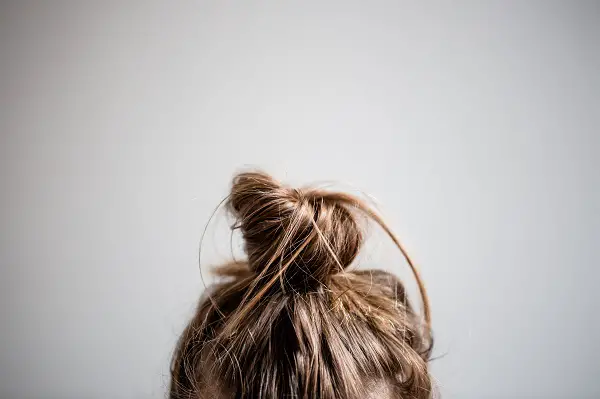
Does your hair seem poorly rinsed and appear sticky? Often, changing your routine from liquid shampoo to solid shampoo causes this inconvenience. As we have seen previously, the composition of a liquid shampoo and a solid shampoo are very different. Consequently, the hair is found to be nourished with new components (vegetable oils and essential oils) and to be washed with natural surfactants often derived from coconut oil. Adapting to this new formula will sometimes take time and a demanding hair transition for the hair. They will then react by causing problems such as becoming sticky.
In addition to this habit to take on the part of your hair, the problem of sticky hair can be linked to several reasons:
Poorly performed actions can accentuate or even trigger this sticky hair problem.
- Badly performed hair rinsing;
- Too aggressive hair washing;
- Badly executed gestures;
- Bad habits when shampooing;
- A too concentrated dose of shampoo on your scalp;
It could also be that the solid shampoo you are using is not the right fit for you and is causing this sticky hair problem. This for different reasons:
- A solid shampoo not suited to your hair type;
- A solid shampoo made up of too aggressive surfactants.
![]() To discover or learn more about specific solutions that exist to address tacky hair problems related to solid shampoo read the article: Why does my solid shampoo leave my hair sticky?
To discover or learn more about specific solutions that exist to address tacky hair problems related to solid shampoo read the article: Why does my solid shampoo leave my hair sticky?
Solid shampoo problem making my hair oily

Oily hair is caused by a disruption of the sebaceous glands. As a result, the sebum is produced in excess and covers the roots in abundance and sometimes even the hair. Visually, the hair looks shiny, as if it had been oiled. The problem with oily hair may be due to a change in hair routine if it appears early in your shampoo change. However, if this problem lasts over time, it is probably due to a solid shampoo that is not suitable for you for several reasons:
- Surfactants poorly suited to your scalp and hair.
- Solid shampoos that are over-oily.
- Prefer shampoos with powders or rhassoul.
- Use essential oils specific to oily hair to better regulate your sebum.
![]() To learn more about specific solutions that exist to solve oily hair problems related to solid shampoo read the article: Why my solid shampoo gives me oily hair.
To learn more about specific solutions that exist to solve oily hair problems related to solid shampoo read the article: Why my solid shampoo gives me oily hair.
Solid shampoo problem drying out my hair
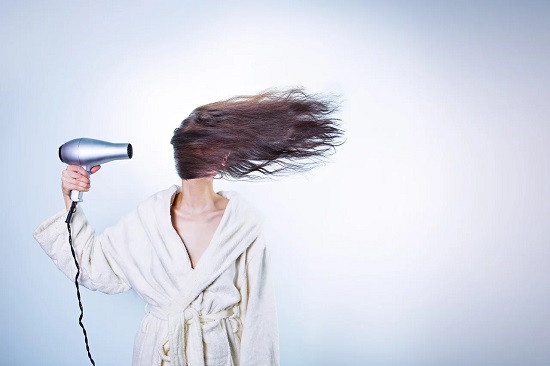
Your hair has always been washed, nourished and "cared for" with conventional liquid shampoos packed with chemical components. Overnight, you switch to a whole new natural routine. You are using a solid shampoo with all new components that your hair did not know before. Natural components that do not act as a decoy on your hair health.
At first, your hair will therefore appear drier because it will be silicone-free. Silicone is the hair's best enemy: it covers the hair fiber with a thin layer and gives your hair the impression of being shiny. By getting rid of silicone, your hair will initially appear dry, and little by little, being nourished and hydrated by natural products, it will regain its health. Patience and understanding will therefore be your best weapons to achieve the victory of finding silky, soft, shiny, and healthy hair naturally. So above all, do not go back to your old hair routine out of spite, which very often is the result of incomprehension and discouragement.
![]() To learn more about specific solutions that exist to solve dry and dull hair problems related to solid shampoo read the article: Why is solid shampoo drying out my hair?
To learn more about specific solutions that exist to solve dry and dull hair problems related to solid shampoo read the article: Why is solid shampoo drying out my hair?
Solid shampoo problem that makes my scalp sensitive
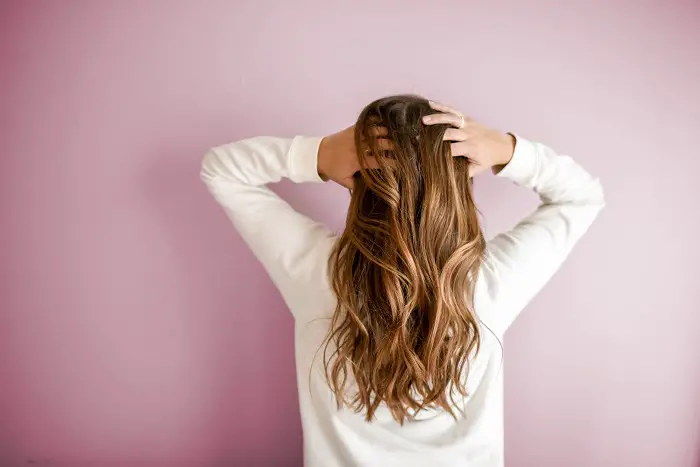
You should know that the hair and scalp must have a pH of 4,5 to 5,5. Liquid shampoos have a pH greater than 5,5 while solid shampoos are composed of mild surfactants. The majority are found with a pH between 4 and 6. Ideal for the scalp! So, when you go over a solid shampoo, the scalp often ends up with a modified pH.
Even if the surfactants are softer and are much less aggressive, the sudden change in composition by switching to solid shampoo can reveal the problem of a sensitive scalp. This doesn't mean that solid shampoo is bad for you. Above all, he will have to get used to the new shampoo. It is still important to determine where does your problem come from de sensitive scalp using strong shampoo. It can come from poorly executed actions during your wash, or from shampoo that is not suitable for you for various reasons.
![]() To learn more about specific solutions that exist to address sensitive scalp issues related to solid shampoo read the article: Why does my solid shampoo make my scalp sensitive?
To learn more about specific solutions that exist to address sensitive scalp issues related to solid shampoo read the article: Why does my solid shampoo make my scalp sensitive?
Tips for avoiding solid shampoo-related hair problems
There is no such thing as lucky or unlucky hair or hair more apt to natural than others. No, we just have to find the shampoo that suits us and works for us. But also to respect the capillary transition period. And above all, to accept your real hair naturally!
To make it easier for your hair to get used to your new solid shampoo, here are some tips and tricks:
- At first, you can alternate between a solid shampoo and a liquid shampoo so that the hair has time to get used to the new composition. Preferably plan an organic and gentle liquid shampoo (without silicone or polymers) to start and alternate from time to time with your new solid shampoo until you just use the latter.
- The solid shampoo can be used daily! So in the long run, no need to alternate between liquid shampoo and solid shampoo. If your hair does not seem to get used to your product (appearance of split ends, persistent hair problems mentioned above, etc.) it is surely that it does not correspond to your hair type and that it now is the time to change it. Indeed, just like any cosmetic product, some solid shampoos are not necessarily suitable for you. Sometimes, you have to try several to find your rare pearl and therefore the solid shampoo that suits us. We do not give up at the first failure, it is not because one product does not work that another will not work!
- Be careful to take a solid shampoo that matches your hair type to avoid having problems. Solid shampoos have different compositions from each other. They correspond to very specific types of hair (oily, colored, dry, thick, fine hair, etc.). Each hair requires special and personalized care. Each shampoo has adapted and very distinct properties, some will be more hydrating than others for example. It is important to respect its nature to avoid hair problems with your solid shampoo.
![]() To choose a solid shampoo according to your hair type, discover our article on the best solid shampoos here!
To choose a solid shampoo according to your hair type, discover our article on the best solid shampoos here!
- Make face masks or hair care regularly in your new natural routine. This will make your styling easier and prevent hair problems. Indeed, devoid of smoothing and detangling chemical agent such as silicone, your hair will tend to tangle more easily during the first shampoos. Masks or treatments will therefore help you relax your hair and style the lengths.
- Remember to let your solid shampoo dry by finding a good storage method. The best is to find a box with a small opening, and place it in a dry place. This will prevent the proliferation of bacteria and better use of your shampoo which will keep its strength. If your solid shampoo is wet, it can make rinsing difficult and weighing down your hair.
What are the composition problems of solid shampoo?
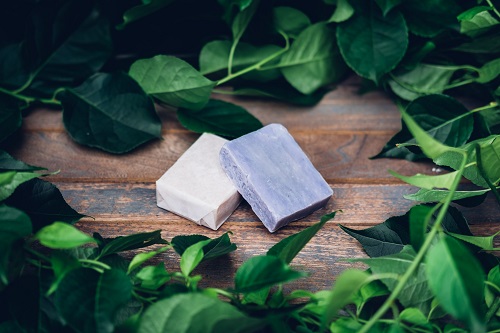
When you make your solid shampoo yourself or buy it from a brand, you may encounter problems during use or manufacture. If you decide to make it, your solid shampoo may not harden and stay too soft when it takes its final shape. Solid shampoo can also crumble. It should be noted that these two phenomena can be linked to their manufacture, their use or their conservation. The important thing is to clearly identify the problem and act accordingly to remedy this concern.
Solid shampoo problem that won't harden
You followed a recipe to make your shampoo solid and yet the end result: it is too soft. Making a solid shampoo is not that easy since you are tackling a chemical process which therefore requires careful attention. It will therefore be necessary that you use certain ingredients essential for the preparation and that you respect their respective dosage. There are a wide variety of recipes and different ingredients available on the internet to successfully make your solid shampoo at home. However, it is important to understand that the chemical formulation is the same for all, it is invariable: surfactants + aqueous solution + vegetable oils or butters + powders + optional ingredients (such as essential oils for example).
What will be variable in the recipe and therefore cause this problem of solid shampoo which is too soft are :
- the choice of the ingredient among these large families. For example, the vegetable oil family contains many different ingredients: coconut, jojoba, argan, olive etc.
- the choice of quantification among these large families. For example, are we going to put more oil, or more powders?
It is these variables when making your solid shampoo that can lead to problems, like a solid shampoo that stays soft. It is therefore necessary to respect basic ingredients and a dosage of each in a certain proportionality in the recipe.
![]() Certain ingredients will therefore allow a better strength of the shampoo. These are SCS and SCI surfactants, co-emulsifiers, stearic acid, cetyl alcohol or arrowroot starch.
Certain ingredients will therefore allow a better strength of the shampoo. These are SCS and SCI surfactants, co-emulsifiers, stearic acid, cetyl alcohol or arrowroot starch.
![]() Certain ingredients which will be increased or decreased will act on its firmness: increase the surfactants, powders or vegetable butters and / or on the contrary decrease the oils, or the aqueous solution.
Certain ingredients which will be increased or decreased will act on its firmness: increase the surfactants, powders or vegetable butters and / or on the contrary decrease the oils, or the aqueous solution.
![]() To learn more and discover all the solutions against this problem of solid shampoo that does not harden, read our article. Why is my solid shampoo too soft?
To learn more and discover all the solutions against this problem of solid shampoo that does not harden, read our article. Why is my solid shampoo too soft?
Solid shampoo problem that crumbles
Whether you have homemade your solid shampoo or bought it from a brand, your solid shampoo can crumble.
When it is homemade, it is surely a concern during its manufacture. Indeed, it is necessary to respect the ingredients and their proportion so that the solid shampoo is a texture which is at the same time firm, creamy and which does not crumble. However, sometimes this balance of ingredients and quantity necessary to achieve a satisfactory result is difficult to find. Often times, you don't know where the mistake was made. Unfortunately, it's too late for your crumbling solid shampoo. However, it is important to understand what went wrong in your recipe so as not to make the same mistake again.
Very often the solid shampoo problem that crumbles comes from the dosage of ingredients :
- Under-dosed surfactants. They are responsible for the texture of your solid shampoo, and when the dosage is very low it is difficult to hold the shampoo.
- Over-dosed powders: they crumble naturally.
- A dosed aqueous solution.
If you do not want to increase the surfactants in your recipe, there are ingredients that help your solid shampoo hold better: cetearyl alcohol, cetyl alcohol or arrowroot starch.
![]() To avoid making mistakes in your dosages and at the time of preparation, as well as to help you choose the right ingredients in your recipe, here is the full article on: why your solid shampoo crumbles.
To avoid making mistakes in your dosages and at the time of preparation, as well as to help you choose the right ingredients in your recipe, here is the full article on: why your solid shampoo crumbles.
There are many solid shampoo problems. However, like any problem there is a solution. Now it's your turn!

